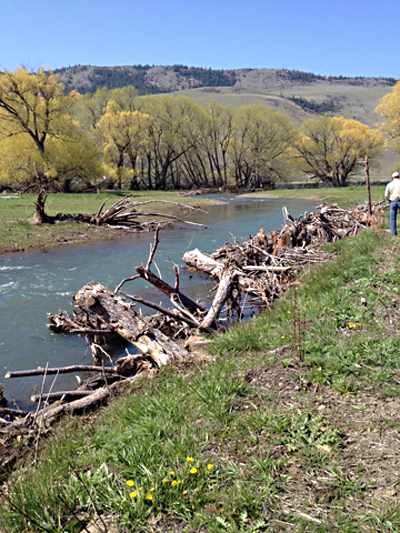Technical Recommendation 19
Update Lifecycle Model
Issue
The tribes have steadfastly insisted that all salmon management and recovery programs and actions be viewed from two perspectives. First, salmon management programs should be designed with a gravel-to-gravel perspective. That is, both positive and negative impacts on salmon production must be evaluated within the context of the entire salmon lifecycle. Second, restoration responsibility should be based upon a fair allocation of the conservation burden. In other words, the responsibility for restoring salmon populations should be proportional to the magnitude of mortality caused by different types of human activities. These concepts were incorporated in the original Spirit of the Salmon Plan through the use of a quantitative lifecycle model that normalized mortality at each life stage in terms of “adult-equivalent” returns to the spawning grounds. This was the first plan that addressed issues at every part of the salmon’s lifecycle.
The approach is still valid, but the original model needs to be updated to incorporate new information gained since 1995 (e.g., additional data on harvest rates and migration mortality through the hydropower system) and additional impacts that were not included in the original model (e.g., climate change, invasive species). This will require a complete restructuring and recoding of the model to incorporate new technology and greater complexity in how we represent each life history stage.
Whereas the tribes were the only group to put all the pieces together in 1995, most agencies are open to this perspective today, and several of them are developing quantitative assessments of one or more of the salmon’s life history stages. Depending on how the various modeling groups cooperate in their efforts, this could lead either to greater consensus about the important factors affecting salmon or to a series of model wars if the groups do not discuss shared concerns.
Hypothesis and Needed Actions
A lifecycle analysis is useful to inform managers about the range of options that might achieve stated management goals. Such an analysis will be more useful if all management agencies have trust in its outputs. Fortunately, managers are more willing to share data and cooperate in addressing common problems than they were in 1995.
The next-generation model (or series of models) will also be most useful if it can be applied in a variety of management arenas (e.g., harvest management, habitat restoration, flow and spill management). To incorporate new ecological realities and be useful in a range of forums, the new lifecycle analyses will have to be multidisciplinary and more complex.
The following actions will increase the likelihood of developing a robust and widely useful update of the first lifecycle model.
- Contact possible collaborators in other agencies. Form a working group of willing participants.
- Identify common objectives and agency-specific objectives.
- Identify available data and other information. Develop a data management strategy to manage needed data.
- Develop model structure and software and coding standards.
- Develop a common and agency-specific work plan and draft schedule.
- Complete updated lifecycle model according to schedule.
Expected Outcome
Future lifecycle analyses will support evaluation and development of restoration strategies that are more likely to successfully address the impacts of climate change, invasive species, toxic pollution and other factors that were not incorporated in the original model. Lifecycle analyses will also serve as an educational tool that stakeholders can use to explore their own restoration options.






